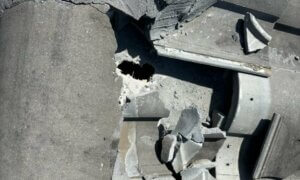If NASA’s Mars 2020 rover is still searching for a name while getting its new wheels and cameras fitted, the European Space Agency (ESA) has already come up with a robot of its own, albeit smaller in size and definitely more springy.
Its name is SpaceBok and it has been designed to work specifically in low-gravity environments where jumping around would be more efficient than walking.
SpaceBok is currently being tested by the students attending ETH Zurich and ZHAW Zurich, at an ESA facility where they’ve attached it to test rigs and made use of one of the flattest floors out there. That’s just to name two of the robot’s many challenges.
One of the most important is the rig test, which simulates lunar gravity and allows the robot to practice its jumps.
“Instead of static walking, where at least three legs stay on the ground at all times, dynamic walking allows for gaits with full flight phases during which all legs stay off the ground.” Hendrik Kolvenbach from ETH Zurich’s Robotic Systems Lab has said of the robot’s unique ‘walk’. “Animals make use of dynamic gaits due to their efficiency, but until recently, the computational power and algorithms required for control made it challenging to realize them on robots. For the lower gravity environments of the Moon, Mars or asteroids, jumping off the ground like this turns out to be a very efficient way to get around.”
So, how does the jumping around happen?
The team behind the robot chose a reaction wheel design, the same thing some satellites use for orientation. This design allows them to control SpaceBok’s jumps.
“It can be accelerated and decelerated to trigger an equal and opposite reaction in SpaceBok itself,” team member Philip Arm said.
“Additionally, SpaceBok’s legs incorporate springs to store energy during landing and release it at take-off, significantly reducing the energy needed to achieve those jumps,” Benjamin Sun, another team member, added.
Currently, the team is working on increasing the robot’s jumps to up to 1.3m in the simulated conditions.
The test rigs SpaceBok is attached to can simulate a number of different gravity environments which means that they can not only simulate how the robot would act on the moon but also on asteroids.
That was where that flat floor mentioned before came into play: the team made use of the Orbital Robotics Bench for Integrated Technology (ORBIT), a 4.8 x 9 epoxy floor that has been smoothed down to a flatness within 0.8mm. The ORBIT is part of ESA’s Orbital Robotics and Guidance Navigation and Control Laboratory.
SpaceBok was placed on it on its side and then attached to a free-floating platform that can reproduce zero gravity conditions in two dimensions.
“The testing went sufficiently well that we even used SpaceBok to play a live-action game of Pong, the video game classic.” Hendrik added, when discussing the test.
Though SpaceBok has performed admirably so far, the robot will still have to undergo more rigorous tests before it will be allowed to set its bouncy feet on any planet, asteroid or satellite.
Follow TechTheLead on Google News to get the news first.

















